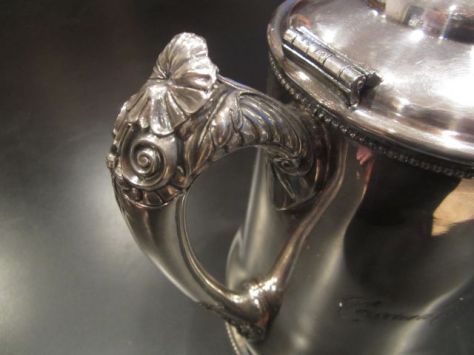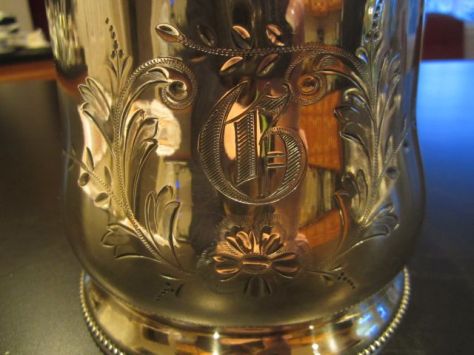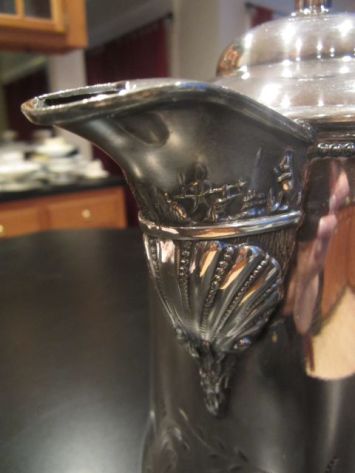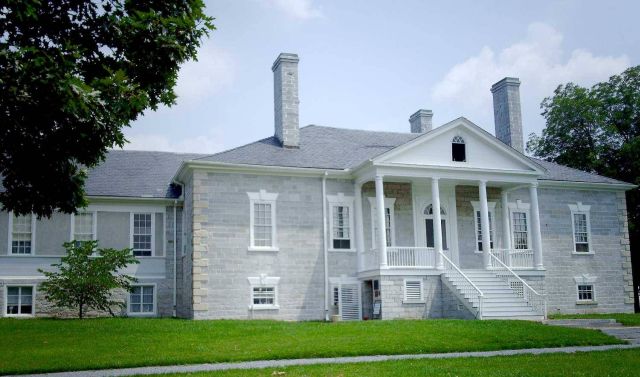Generosity
“What we do for ourselves dies with us. What we do for others and the world remains and is immortal.”
Albert Pine (1851)
I want to tell you a story.
Since Brett and I started this blog, we have started following many other blogs. We enjoy seeing other places through the eyes of others or learning about someone else’s point of view. One thing we also enjoy is reading and seeing blogs about antiques and vintage furniture and items. It is so much fun seeing things we would never otherwise see being here in Virginia.
One of these blogs we follow is called the Estate Store and Community Warehouse.
www.communitywarehouse.org
Questions? Email ed@communitywarehouse.org or call 503-445-1449
Community Warehouse is a volunteer-based nonprofit agency that collects and redistributes donated furniture and household goods to low-income people in Oregon and southwest Washington. Working in partnership with more than 100 social services agencies, the Warehouse fulfills over 40 requests each week. They value recycling, volunteerism, financial transparency in all aspects of the organization, preserving the dignity of clients, and providing services in a timely and cost-effective manner that honors the donors who keep their doors open. Led by a group of dedicated volunteers including founders Roz Babener and Fineke Brasser, Oregon Community Warehouse incorporated in January 2001 and began regular pick-ups of donated items in the Portland metro area. Community Warehouse is one of many furniture banks involved in a nation-wide effort to distribute furniture and household goods to families and individuals in need.
Recently I came across the Estate Store blog and an item they were featuring caught my eye. It was an antique silver water pitcher. Now have you ever hear the saying “I was going to conquer the world, but then I saw something shiny”? Well, that would fit me. Silver just seems to catch my eye anymore. So of course I had to read about it. And wow, I am so glad I did. This water pitcher has some really great history!
This is the information I read from the “Estate Store” blog:
“Antique Corcoran Cadet Corps Pitcher
Here’s an interesting piece of American history. This is a large silver plated water pitcher with an enameled iron interior lining. It bears the monogram of the Corcoran Cadet Corps (more about that below). The pitcher stands about 12 inches tall to the top of the lid finial and it is in good condition excepting a couple of dents in the side.
It is heavily decorated and the design bears a patent date of October 29, 1878. It is marked Superior Silver, which was a brand used by the Middletown Plate Company. Middletown was taken over by International Silver in 1899 so we know this piece dates to the late 19th century.
From what I’ve been able to see the Cadet Corps was a voluntary paramilitary (and likely Roman Catholic) fraternity located in Washington D.C. in the late 19th and early 20th century. They participated in the usual sorts of activities: drills, forced marches, marching in public monument dedications, acrimonious court cases, trips to Atlantic City and the World’s Fair, that sort of thing. They even had a formidable basketball team which once trounced the opposition with a score of 6 to 3, not withstanding slippery floors which “marred play that might have been otherwise faultless.”
Perhaps most interesting in the view of this distant point in history is their participation as part* of the “National Guard” in response to the threat to civil order presented by Coxey’s Army in 1894.
The movement that became known as Coxey’s Army (a.k. a. the ‘Great Army of the Idle’) was a populist protest of unemployed persons in response to the recession of 1893. They formed in several bands throughout the United States with the stated intention of marching upon Washington to declare their grievances in the seat of power. The most notable faction was led by Jacob Coxey, an industrial capitalist and perhaps the most losing, but undaunted candidate in American politics.
There was great fear that they would achieve their objective by reaching Washington and that once there . . . they would protest the policies of President Cleveland which they felt resulted in their unemployment in the first place. As usual, the forces of repression in society mobilized to meet the heinous threat of peacefully protesting poor people by mobilizing paramilitary and police organizations. Among these were the members of the Corcoran Cadet Corps.
As usual in such situations the war-hawks made sure to put on a good show when the opposition was still miles away, to grab some newspaper headlines and then embark upon a victory parade.
Coxey’s Army did eventually reach Washington where. . , nothing much happened. Coxey himself was not allowed to give his prepared speech “We…say, help, or we and our loved ones must perish… we come to remind the Congress here assembled of the declaration of a United States Senator, “that for a quarter of a century the rich have been growing richer, the poor poorer, and that by the close of the present century the middle class will have disappeared as the struggle for existence becomes fierce and relentless.”
Yes, that’s the entirety of it.
Thanks to ever-present gendarmes, the Army was quickly moved to temporary quarters at an old dump they called Camp Tyranny. Coxey and some of his associates were arrested for the revolutionary acts of illegally displaying banners (2 x 3 inch lapel pins) and walking on the grass. Although they attested that they did not walk on the grass and lapel pins were not banners they were found guilty, fined $5 and sentenced to 20 days in jail. The rest of the army dispersed and the largest part decamped to Virginia where they were eventually arrested on charges of vagrancy by police from (as non-sensical as it may be) Baltimore, Maryland. It should be noted that they joined the National Guard in response to the actions of rogue members prior to their unsatisfactorily resolved court case.”
After reading this history, I really wanted to find out the cost of this piece of Virginia History. So I asked for the price. Sadly, the cost was just a little more than I could justify at this time with all the other expenses we are about to incur opening the bed and breakfast. Ed even offered to work out a deal that would allow me to purchase it over time. But still, I couldn’t do it knowing it would take money away from other items that are required. So I told Ed that I would have to pass for now and hope that it would find a loving home with someone else.
About a week later, I received an email from Ed. The owner who had donated the item to the Community Warehouse and Ed had been talking about our interaction. When she found out it was “Belle Grove” that wanted the water pitcher, she was thrilled. Ed told me that her parents had lived in Strasburg, Virginia, just outside of Middletown, Virginia. She told Ed if she had known we wanted it, she would have donated it to us. She told Ed that her parents had loved “Belle Grove”. So they worked out the details and long story short, all he needed was our address to ship us the pitcher.
Belle Grove Plantation
Middletown, Virginia
www.bellegrove.org
At first my heart just about burst, but as I read, I knew I couldn’t accept it. We aren’t the “Belle Grove” her parents had loved. The “Belle Grove” they knew is the “Belle Grove Plantation” in Middletown, Virginia. It was built in 1797 and was the home of Isaac and Nelly Madison Hite, sister of James Madison. Nelly had named her plantation after “Mother’s Plantation” which was our “Belle Grove Plantation”. We get that mistake all the time since we are both in Virginia and both are related to the Madison Family.
So with a heavy heart, I emailed Ed and told him of the mistake. I let him know that I couldn’t accept it, but if they contacted the other “Belle Grove”, I was sure they would love to have the pitcher. I let him know that I would have been honored to have such a wonderful piece of Virginia History and if the other “Belle Grove” didn’t want it, I would gladly take it.
Ed contacted the donor and let her know about the mistake.
About two days later, I received another email from Ed. He told me that the donor understood the mistake and still wanted our “Belle Grove” to have it!
I can’t tell you how overwhelmed and honored we are! What a wonderful gift to receive! So Ed shipped it from Oregon and the pitcher made its way back to Virginia. We just received it yesterday.
When I took it out of the box, my heart just leapt! We just can’t begin to express how much we appreciate this gift. The donor, Jane also has a blog. We hope you will also visit it and let her know what a wonderful gesture it was!
http://mulchmaid.blogspot.com/
But you know this isn’t the first wonderful gift we have received since we started this journey!
Just about a month ago, one of Brett’s co-workers, who also follows our blog, came to Brett with a wonderful offer. He and his wife purchased a new freezer for their home and had an almost new full size upright freezer that they wanted to donate to our bed and breakfast. Of course we accepted because a freezer is another big ticket item that we need to purchase for Belle Grove. But to our great surprise, the freezer was larger than we expected and will be of great use to us! And he even delivered it to our Chesapeake home for free!
Another surprise happed just a few weeks ago. We received a donation of funds from one of our readers from Colorado. In the big scheme of things, it wasn’t a great amount, but to us it was very significant and it was very much appreciated. When we thanked her for the donation, she apologized that it was not more. But you know even a $1 can make a huge difference to us.
Lastly we can’t express the wonderful participation we received during our “Silent Auction”. We had a number of people who placed bids and won some wonderful antiques. Those funds will go to help us sure up the Smoke House and Summer Kitchen until we can get the funds to restore them.
But we want everyone to know that all of these acts of generosity will make a huge difference for our bed and breakfast. We are thankful for each and every one of them. They will help us bring this grand plantation home back to life and to protect and preserve its history for present and future generations.
Thank you to all who have donated and to all who have supported us through your thoughts, prayers and words of encouragement. Each is worth a pound of gold to us! And each will be immortal to this plantation!
If you would like to make a donation, please locate the “Donation” button at the top of our left hand column. You may make a donation through Paypal or use a credit card. If you have an item you would like to donate to Belle Grove to become part of its living history, please email us at virginiaplantation@gmail.com. Every item received will be loved, cherished and its history will be displayed with it.
Thank you!



















































